Updating your accounting system
Growth and expansion is an exciting part of any business venture, but having the wrong tools, software, or systems can cause headaches.
Updating your accounting system from low-end software to a fully integrated system is essential to removing those headaches. It is more than just a luxury for your growing business: it is a fundamental tool that will save you time and money while reducing frustration.
How do you know when it is time?
New growth means knowing when to trade in your small business accounting system for a fully integrated system that encompasses and integrates all aspects of your business. While your current software may have served you well at the outset, increased sales, increased customers, and increased production create added stress to that system. It is time for something new.
Three tell-tale signs
According to business management solutions experts, there are three tell-tale signs that will help you identify when you have outgrown your current accounting software. They relate to the following three areas:
- Multiple systems
- Duplicate data entry
- Time required for end-of-period reports
Looking more closely at multiple systems
In a low-end accounting system, it is often necessary to import data from multiple systems to reconcile balances. You may be drawing data from an application specifically for customer relationship management, another for manufacturing, another for warehousing, and even more for accounting, sales, and marketing. If this is the case, you need to evaluate the problems that are likely to arise in your own business from such a collection of standalone solutions, and realize a new consolidated enterprise system from one vendor will relieve these problems and give you the opportunity to get a bird’s-eye view of your accounting.
The issues to consider include:
- Sales orders, order fulfillment, and inventory that need to be reconciled with the accounting system
- Time, otherwise focused elsewhere in the business, that is wasted doing data entry
- Accuracy of data that can be compromised
- Applications that need to agree
- Time spent troubleshooting if balances are not reconciled
- Bad data that doesn’t line up with incorrect inventory levels, and incorrect receivables that can lead to bad customer relations
Data entry and wasted time
Another tell-tale sign, that shows you need an upgrade to an integrated system, is your data entry process. If you are entering data more than twice into multiple systems, you are wasting time. A new comprehensive software system will allow you to enter all that data in one place, and allow you to view data from all other modules; drastically eliminating wasted time spent digging through multiple solutions to find the answers you need. A single system is necessary to save you that time and money. The issues to consider include:
- Managing GL on the backend, while managing sales orders and inventory systems for every single order processed
- High probability that data entry mistakes will be made
- Excess time will be spent managing multiple systems
Closing up the books
The third sign, revealing your need for an integrated system, involves the time required to close your books at the end of each period.
With a low-end accounting system, the following issues arise:
- From a user’s perspective, it could take several weeks to close everything and ensure the report is balanced. Gathering data from a variety of sources and applications adds delays and introduces potential errors into the data.
- Getting an overall picture is only possible when the books are closed, and ‘real-time’ evaluation is not possible.
Benefits of an integrated system
Integrating your systems will only help you become more efficient as you continue to grow your business. Wasted time and money can be captured to propel you forward effectively. Looking at the benefits of a fully integrated business accounting system will encourage you in taking the next steps.
Having an integrated system will:
- Give you one system of record keeping, providing a complete, up-to-date business picture all under one dashboard
- Allow you to create a seamless solution with flexibility and features that can be implemented across the system
- Provides a scalable option that can be expanded as your business grows
- Include checks and balances to ensure all systems agree and align
- Save you time entering data, reconciling, and troubleshooting
- Give you ‘real-time’ access to information in areas such as inventory and cash balances
- Give you immediate visibility into results and reporting
- Improve and increase customer relations due to correct answers and immediate insights
- Improve connectivity between offices in different locations
- Reduce staff – A single solution is easier to operate and easier to maintain. Should problems arise getting technical support is easy
- Free up more time to work on other business initiatives
Taking the next steps
As you take a look at your existing system and consider the benefits of finding an integrated one, it is important to prepare for change. Document what you currently have and use, so you understand what is needed in a new system.
You will need to document:
- All systems and processes currently used, including applications and employees needed for those tasks
- Data that is duplicated across multiple systems
- Time spent doing duplicate data entry
- Entry points into each system
- The hours saved on reducing your workload
- And calculating how this will improve other areas of business
- Deadlines when books are to be closed and reconciled
- And what processes are needed to get that accomplished in a more timely way
Upgrading your business system to meet the needs of your growing business makes sense. Certainly when you know you will be saving time and money, and removing frustration and avoidable problems. N’ware Technologies offers feature loaded software solutions for small and mid-size businesses and can help you find exactly what your business needs as you grow.





